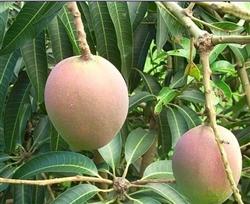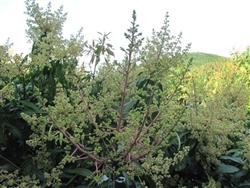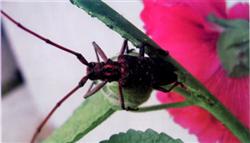Measures to overcome the age of mango

To overcome the annual fruit of mango, the first thing is to have an appropriate amount of flowers; the second is to avoid low temperature and rainy weather during flowering; the third is to try to improve the fruit setting rate. The measures are as follows: first, the selection of varieties according to the characteristics of low temperature, overcast and rainy weather in early spring in Guangxi, it is ideal for mango to blossom after early April. Therefore, varieties with late flowering, strong regeneration energy after inflorescence freezing and high proportion of bisexual flowers, such as purple flower awn, cinnamon fragrant awn, autumn awn and ivory awn, should be selected. Second, after strengthening the management of fruit harvesting, organic fertilizer, especially phosphorus and potassium fertilizer, should be increased, and quick-acting fertilizer should be applied reasonably in autumn shoot growth, flowering, flowering and fruit hanging period. Shallow ploughing after fruit harvest, deep ploughing before and after the Beginning of Winter, creating a more fertile, loose, moist and fertilizer, water, gas, heat coordinated orchard soil environment. For mango orchards in barren mountains and hills, special attention should be paid to deep ploughing and green soil improvement, and the construction of orchard drainage and irrigation system and soil and water conservation projects should be done well so as to lay a good foundation for high and stable yield of mango. Third, reasonable pruning of mango fruit trees is generally carried out in summer pruning and postharvest pruning. Summer shears usually erase all summer shoots to adjust the contradiction between summer shoots and fruits for nutrients; at the same time, they should also remove inner bore branches and too weak and dense inflorescences; cut off the middle and upper part of the fruit without flowers and fruit shoots, and the fruit will be exposed to reduce the damage of diseases and insect pests and promote the growth of fruit. Postharvest pruning is usually carried out after fruit harvest and before autumn shoot germination. Remove the over-dense branches, weak branches, drooping branches, senile branches, Zhe branches and disease and insect branches that affect the light, so as to improve the light conditions, save nutrients and promote the growth of the remaining branches. In addition, the cross branches between and within the crown should be cut back to keep a certain distance from the crown, and the declining branches, overlong vegetative branches and fruiting mother branches at the tip should be cut off to promote the germination and growth of autumn shoots. Fourth, the prevention and control of diseases and pests of mango mainly include anthracnose, soot, powdery mildew, gum disease, fruit class disease and scab, and the main pests are: tail night e (also known as drill worm, shoot moth), leafhopper, poison E, beetle and so on. Carbendazim or topiramate was sprayed 1-2 times during each shoot extraction and fruit hanging period, or methamidophos and omethoate 1000 times every 7-10 days, when the new shoot length was about 3 cm. Fifth, promoting flower picking, the lack of annual flowers is an important reason for reducing yield. For late flower varieties, the crown can be sprayed with ethephon 800-1000 times or ethephon 1000-1200 times mixed with B9 300400 times from mid-December to the first ten days of December, which can increase the heading rate by 15%. 35%. If the inflorescence blossoms too early, it can be removed when the inflorescence grows to 3-5 cm to promote the re-germination of lateral flower buds. 6. Pollination with 15 bees per hectare during flowering period and artificial pollination should be used in the case of few bees. After flowering, 0.3% potassium dihydrogen phosphate plus 0.2% urea was used for extra-root topdressing 1-2 times; 0.1% boric acid was sprayed at full flowering stage; 5-8PPM spring 2.4-D2-3 times or 20-3OPPM "920" was sprayed at fruit hanging stage, which had obvious effect on flower and fruit protection.
- Prev

Key measures for protecting Flower and Fruit of Mango
Mango is often due to bad weather, diseases and insect pests or improper fertilizer and water management, resulting in a large number of flowers and fruits, resulting in losses. Therefore, it is necessary to start as soon as possible and take all effective measures to ensure the normal flowering and fruiting of mangoes. According to the experience of fruit farmers in Huazhou City, the following measures should be implemented: 1. Strengthen fertilizer and water management and timely irrigation.
- Next

Control of mango longicorn beetles
Longicorn beetles belong to Coleoptera and Cerambycidae, which occur in mango producing areas of southern China. By feeding on the branches with larvae, the growth of the damaged plants is weakened, and in serious cases, the damaged branches are easy to be broken by the wind. The insect produces one generation a year, and it overwinters mainly as larvae, and a few pupae or adults can also overwinter in the pores. The following year.
Related
- Moge, come on! The staff of the peasant association in the producing area of cantaloupe were frightened when the crowd gathered.
- Causes and Solutions of low Fruit setting rate of Apple
- Symptoms and control measures of passion fruit virus disease
- Fruit growing lesson: how do apple orchards keep high yields?
- Can you build orchards in the mountains? What are the pros and cons?
- How to manage the coloring period of Crisson grape?
- This paper introduces the processing technology of two kinds of fig products.
- How much is a month for retired teachers in rural areas by 2020?
- How can strawberry planting increase sugar content? We should pay attention to management in many aspects.
- What are the cultivation techniques on how to improve the yield of golden fruit?

